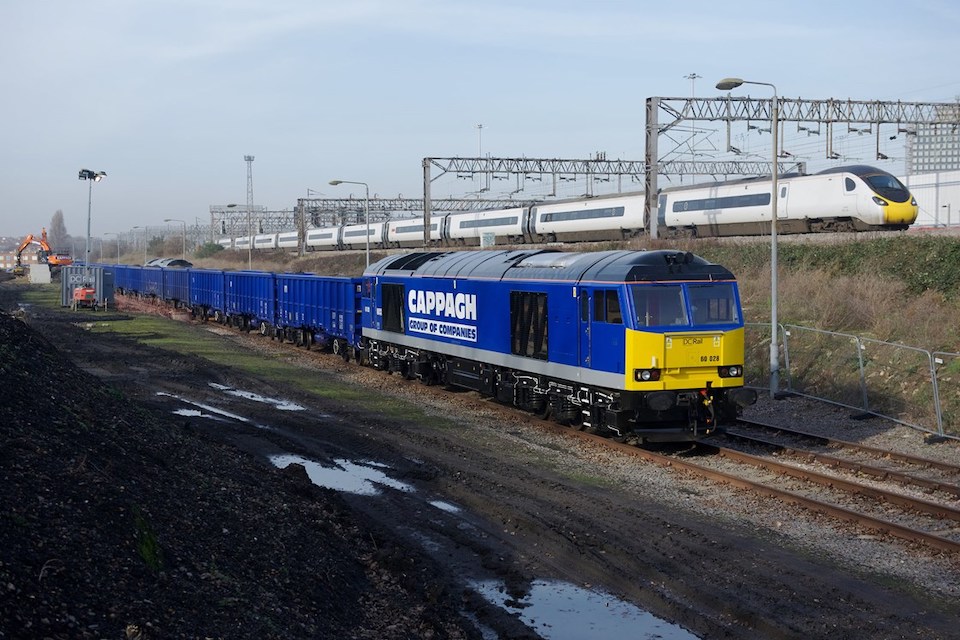HS2 launches 3rd London TBM and commits to zero road trucks

Britain’s high-speed rail project HS2 is all set for a third tunnel dig in London. The huge civil engineering project, initially building a new railway line between London and Birmingham, will run under the streets of the UK capital with the help of a massive 847-tonne machine.
The tunnel boring machine will be responsible for building an 853-metre logistics tunnel for the project, reducing surface lorry movements by 70,000 during the process. The tunnel will have a 6.2-metre internal diameter and start five metres below ground, reaching a depth of 20 metres. The overall project aims to improve the reliability and capacity of the rail network in London and is expected to be completed by 2025.
This time not for trains
It’s an almost weekly occurrence, but HS2 Limited, the company formed to build Britain’s high-speed railway, is launching yet another tunnel bore. That may only be a slight exaggeration. Much of HS2 will be in tunnels, in an effort to mitigate environmental impact in the English countryside – and for the very practical reason in London that there really isn’t anywhere on the surface to accommodate the line. The tunnel boring machines (TBMs) have all been named, and have become something of a series of subterranean celebrities themselves.
This time, the tunnel won’t be used by HS2 trains, but instead will be used to deliver materials and remove spoil from the northern portal where HS2’s Euston twin bore will be constructed. Engineers from HS2’s contractors launched the 847 tonne machine from the Atlas Road site in North Acton (about five miles or eight kilometres away in west London), from where it will build an 853 metre tunnel to the Old Oak Common Station site.
Shift to rail
The tunnel drive will be completed in around six months, with the tunnel constructed using 4,264 concrete segments forming 533 tunnel rings. The segments, each weighing over three tonnes, have been produced by Pacadar in Kent, supported by rail-born delivery to that holding site.
HS2 is emphatic in its intention to avoid road transport for the construction project. “The tunnel will be used to transport 8,010 tunnel segment rings to construct the Euston tunnel”, says their statement. “The segment rings are being manufactured in Hartlepool [in north east England] and will never be transported by public road. [We will be] utilising rail, and the logistics tunnel – all part of HS2’s commitment to sustainable construction.”
A direct link between logistics hubs
The whole project is intended to be “lorry free”. Road trucks do not figure in the operation. A conveyor system will run through the logistics tunnel, and will connect to an existing conveyor at Atlas Road, taking the London clay being excavated to construct the Euston Tunnel to HS2 London Logistics Hub at Willesden Euro Terminal. From there, the spoil will be taken by train for re-use at sites around England, in Kent, Cambridgeshire and Rugby.
“The Atlas Road Logistics Tunnel is key to how we will be constructing the Euston Tunnel between Old Oak Common and HS2’s Euston station”, said Malcolm Codling, HS2’s Project Client for the London Tunnels. “The logistics tunnel allows us to take 70,000 lorry journeys off the local roads that would otherwise have been required and will reduce the impact of HS2’s construction on the local community.”

Total of 5 machines
”This is our third TBM to launch in London”, said James Richardson, Managing Director of Skanska Costain STRABAG JV, the joint-venture contraction partners. “Later this year we will have five machines operating. Four of these will be boring the HS2 tunnels, linking West Ruislip and Old Oak Common. Today’s launch is significant as it is not used for the operational railways, but will create a direct link to between our logistics hub and Old Oak Common, allowing us to transport tunnel segments and spoil without using local roads.”
The TBM being used to construct the tunnel has been repurposed using components from a TBM, ‘Ellie’, that was previously used on the Crossrail project – the central London tunnel which forms the core section of the celebrated Elizabeth Line. TBM Ellie dug two sections of the Crossrail tunnels in the east of London and the city centre, boring a total of 2.23 miles (3.56 km). Following what has become a tradition of naming TBMs, the local community have selected the name ‘Lydia’ for the TBM. Lydia Gandaa is a former teacher at nearby Old Oak Common Primary School and a founding member of an important social enterprise in the area.
You just read one of our premium articles free of charge
Want full access? Take advantage of our exclusive offer





